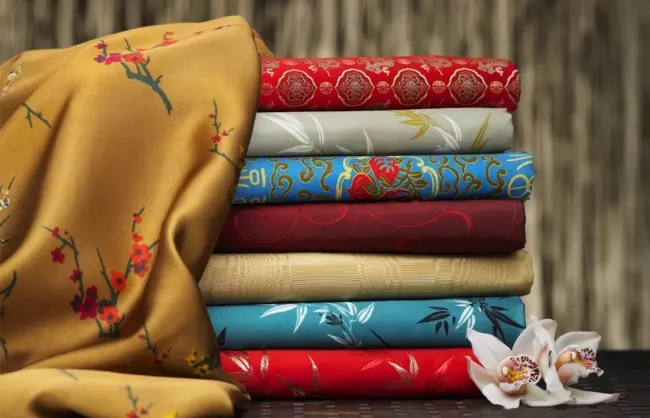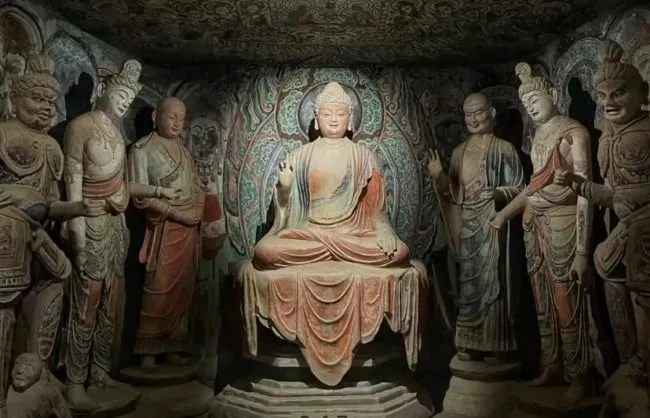If you’re interested in Chinese history or considering a visit to China, you might have already encountered the term “the Silk Road” quite a few times. Many are wondering, what are some facts about the Silk Road? In this article, we have put together the top 8 Silk Road facts that might be of interest to you.
1. What & Where is the Silk Road

The Silk Road fact #1, it is the world’s longest overland trade route stretching between East Asia and the Mediterranean region as well as parts of North Africa. For thousands of years, it has been used for international trade and cultural exchanges.
The Silk Road usually refers to the land Silk Road, but in fact, there were five Silk Roads that started from China.
- The mainland Silk Road went from China’s capital at the time through Central Asia to Europe.
- The southern route went through the Karakorum mountains.
- The northern route went into Russia and then westward.
- The Tea Horse Road went through Tibet to India.
- And the Maritime Silk Road went across the South China Sea to Southeast Asia, the Indian subcontinent, Africa, and Europe.
2. Where Does the Silk Road Start and End
As mentioned before, the Silk Road generally refers to the mainland Silk Road, which started in Chang’an (today’s Xi’an), the capital of the Western Han Dynasty, and ended in Rome. The total distance is about 4350 miles (7000 kilometers). It went across countries including Kazakhstan, Kyrgyzstan, Tajikistan, Afghanistan, Iran, Iraq, Syria, Lebanon, Israel, Turkey, Greece, and Italy.
The Maritime Silk Road was over 9320 miles (15,000 kilometers) long, connected countries including today’s Indonesia, Malaysia, Thailand, Sri Lanka, India, Bangladesh, Pakistan, Oman, Somalia, Kenya, Israel, Syria, Turkey, Kuwait, Greece and other regions.
Popular China Silk Road Tours from Xian
- 10 Days Ancient China Silk Road Tour from Xian to Kashgar
- 11 Days Essence Silk Road Tour from Xian to Urumqi
- 15 Days In-depth Silk Road Tour from Xian to Xinjiang
3. Why is it Called the Silk Road
This massive network of traffic was not officially named until 1877 when the German geographer and traveler, Ferdinand von Richthofen, first used the term “Silk Road” to describe the trade channel between Europe and East Asia. Silk was the most prominent product of trade in China.
4. History of the Silk Road: When Did it Begin and End
Another Silk Road fact, it began as an official trade network in 130 BC during Western Han Dynasty under the reign of Emperor Wu. The first person recorded in history to walk this route was Zhang Qian, an envoy sent by Emperor Wu.
In 142 BC, he was ordered to go from Chang’an to the west. On his way, he was imprisoned by the Xiongnu army twice. After 13 years of running, he finally returned to Chang’an and reported what he had learned about the Western people and the regions during his journey.
After Zhang Qian’s visit, envoys from Persia and other countries also came to Chang’an to visit, bringing their local specialties and treasures in exchange for Chinese silk, porcelain, and other products. From then on, countless businessmen traveled the route exchanging not just products, but language, religion, and culture as well.
The prosperity of the Silk Road began to wane during the Yuan Dynasty when the Mongols invaded China and heavily influenced Chinese culture and the economy. Then the Ming Dynasty adopted isolationism in 1371 and put a complete stop to cross-border trade and overseas expeditions.
5. The Trade along the Silk Road
Many important goods were traded on the Silk Road. Apart from silk, China also exported a large amount of porcelain, tea, and bronze products. In exchange, foreign merchants brought horses, woolen products, exotic foods, spices, and glass.
It wasn’t just items that were exchanged on the Silk Road. Significant inventions in human history also went around, like papermaking techniques, gunpowder, glass making.
What was equally important was the spread of religion and philosophy. Buddhism, Islam, and Christianity all traveled on these routes carried by people of different backgrounds and races. Most notably, Buddhism was introduced into China and had since become very popular. If you travel along the Silk Road today, you’ll still find many impressive landscapes, Buddhist grottos and sculptures (e.g. Mogao Grottoes), that stand as a testament to history.
Unfortunately, the merchants and travelers carried not just goods, but diseases as well. The Black Death, which broke out in 1347, was a terrible disaster that got spread along the Silk Road. Some research suggests that the roads brought it to Mediterranean regions, where they spread north and south to Europe and Africa.
Recommend Central Asia Silk Road tour:

6. The Ancient Journey on the Silk Road
Here are more Silk Road facts. The Silk Road crosses some of the most dangerous terrains in the world, including the Gobi Desert and the Pamir Plateau. Travelers had to complete the journey on foot, on horseback, or riding camels. Carrying valuable goods, merchants formed caravans, usually accompanied by many guards in case of attacks and robbery.
7. Famous Travelers on the Silk Road
One of the most famous travelers on the Silk Road is Marco Polo, who went to China with his father and uncle when he was 17 years old. After returning to Italy in 1295, he brought back not only great wealth, but accurate information about China as well. His book about his journey made him throughout history.
Another famous traveler was monk Xuanzang, who made a 17-year pilgrimage to India and brought Buddhist teachings into China. His journey to the west was recorded and became a legendary tale in Chinese history.
Recommend Silk Road Group Tours at the best prices:
- 10 Days China Silk Road Tour from Lanzhou to Urumqi
- 7 Days Silk Road Small Group Tour of Xian-Zhangye-Jiayuguan-Dunhuang
8. Significance of the Silk Road
The Silk Road has had a drastic impact on world history. The network connected powerful civilizations, most notably Han Dynasty, the Parthian Empire, and the Roman Empire.
They exchanged crops and animals which spurred a growth in population, major religion including Buddhism, Islam, and Christianity, and world-changing technologies such as papermaking and gunpowder. In this process, China gained significant wealth and power.
Today, the Chinese government is working on the revitalization of the ancient Silk Road. China has announced plans about highway and train routes constructions to Europe. 40 railway lines already connect China and Europe, making a train ride to Germany only 18 days. This trillion-dollar project aims to make traveling quicker and cheaper by building a modern Silk Road.
The ancient Silk Road has also attracted countless travelers from China and abroad. Many have made the pilgrimage to witness the rich history along the journey. The newly installed infrastructure has made traveling a lot easier for backpackers and cyclists. Visitors also take buses and trains along the Silk Road or make road trips.
Read more about Why Was the Silk Road Important?










